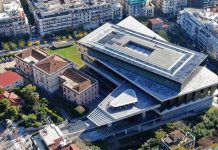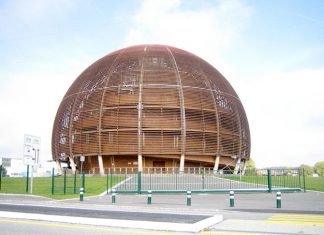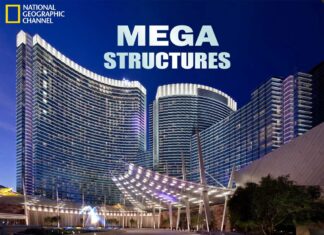Rhythm in architecture is a design approach that refers to the repetition of patterns, shapes, forms, elements and colors. It contributes to improving the sense of movement and flow in architectural design. Architectural rhythm helps to create aesthetically pleasing and harmonious designs that also meet functional requirements.
Architects should not ignore the importance of rhythm in buildings, as it is a crucial factor to achieve balance and unity within architectural design.
In this article, we’ll discuss the role of rhythm in building design, explore different types of rhythm in architecture and various ways to create rhythmic designs by using proportion, scale, repetition and light.
What is Rhythm?
Rhythm is originally a music term that means movement patterns of musical notes and lyrics at a certain time. Architecture embodies this musical term as repeating patterns of lines, shapes, surfaces and forms, instead of notes.
You can implement rhythm in architecture in every scale and design process. Spatial rhythm is a perfect example of this. Some buildings have rhythmic plans that create spatial patterns.
If we say each group consisting of the same types of spaces creates a space unit, then the pattern between these units creates a rhythm. And this rule of rhythm can be applied to all types of rhythm in architecture.
So, how many types of rhythm are there in architecture and design? We can categorize rhythm into 5 types.
- Regular rhythm
- Progressive rhythm
- Alternating rhythm
- Random rhythm
- Flowing rhythm
The Role of Rhythm in Architecture
As one of the main requirements of a well-designed building is “Venustas” (Beauty) according to Vitruvius, Rhythm plays a significant role in architecture. Because the eye wants to see a balance everywhere, including in building designs.
Architects use repetition of patterns, shapes, forms and elements to find a rhythmic balance. For instance, classical architecture creates this sense of rhythm by repeating columns, pilasters, arches and ornaments throughout the structure.
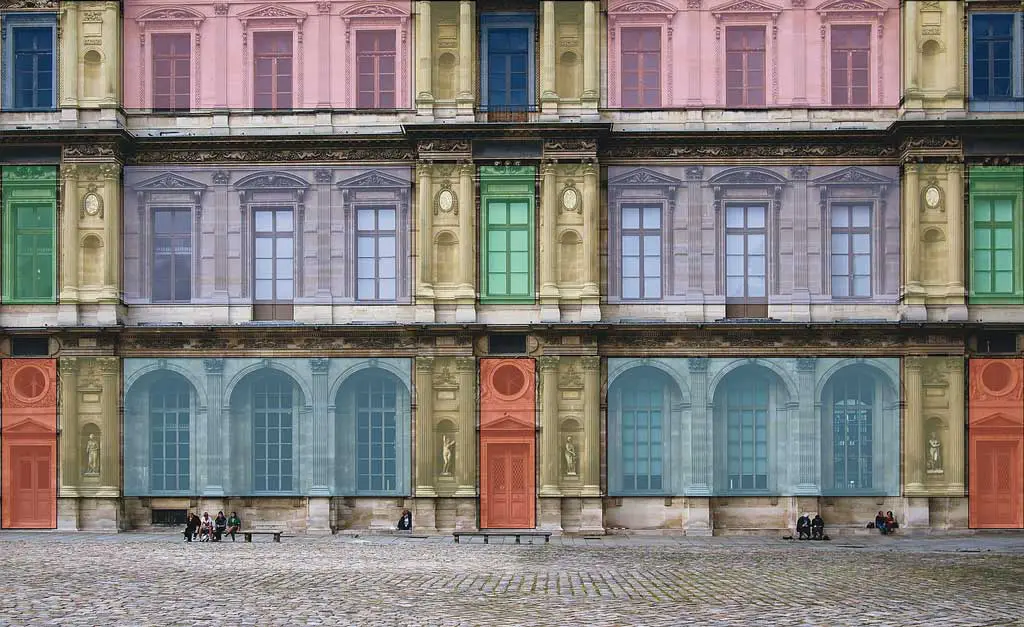
If you look at the front facade image of the Louvre Museum above, you’ll easily understand what rhythm means in architecture. Each color represents the exact same group of architectural elements. Thus, every story of the facade has a distinguished rhythmic design.
Let’s give a letter to each color and create the pattern code of the ground floor facade. It will look like A-B-C-B-A-B-C-B-A. Can you identify the repeated pattern?
Now, it’s easy to solve the pattern as we give color and letter codes. C (Blue) is surrounded by two B (Yellow) to create a B-C-B. Then each B-C-B group is surrounded by two A (Red) to create A-B-C-B-A.
This is a clear and simple example of how architects can use rhythm to create attractive and beautiful designs. However, this was only an example of repeating patterns. Modern architecture has discovered different, more dynamic and complex ways of creating rhythm.
Rhythm in Modern Architecture
Modern architects also use rhythm in their designs, but in different ways. They generally don’t prefer to place every element symmetrically. Instead, they think of a building like music and you can see the rhythm only when you behold the overall design of the structure.
Modern architecture uses building elements and forms in unusual ways and arrangements. These structures have balance in architecture, both symmetrical and asymmetrical.
To sum up, rhythm is an essential tool for designing harmonious structures. Whether it is used in traditional or modern ways, rhythm plays a vital role in architecture. Moreover, architects who want to create eye-catching buildings should consider creating rhythmic designs.
How to Create Architectural Rhythm?
1. Proportion and Scale
Proportion and scale are big factors that play an important role in achieving rhythm in architectural design. While the proportion is the relationship between a building’s elements and parts, scale refers to the size of the building in accordance with its surroundings.
These two important matters help architects to design balanced and harmonious buildings. There are different ways to create architectural harmony through the proportion and scale of a building.
The first way is using the golden ratio, which is a ratio of 1/1.618. As you know this is nature’s very own technique to create stunning forms. Why don’t we architects and designers implement this flawless ratio to the proportion and scale of our designs?
For example, you can use this ratio to determine the size of windows or doorways in relation to the overall size of the structure.
Another way that architects can create rhythm in design is to use repeating patterns of different-sized building elements. Repeated use of small and large windows, in the way of forming a pattern, on the same facade is a good example of this.
In summary, proportion and scale are essential elements that architects should consider when trying to design rhythmic buildings. By doing this, architects can create visually appealing structures, with no damage to function.
2. Repetition
Aside from playing with the proportion and scale of a building, repetition is another aspect of creating rhythm in architecture. It refers to the repeated use of patterns, shapes, elements and forms in the structure.
The repetition contributes to the holistic stance of a design. In some cases, architects prefer it as the major technique to produce eye-pleasing structures.
You can use repetition in different ways. For instance, repeating traditional architectural elements such as arches and columns is a kind of effort to achieve rhythm, which was a common method in classical architecture.
Numerous examples of modern and contemporary architecture also include the repetition method, but in different ways. Because these buildings transform classical architectural elements into unordinary forms. Furthermore, many contemporary structures feature asymmetrical balance, instead of symmetry.
These buildings repeat geometric shapes or patterns in various sizes and forms. This means that not the pattern itself, but the overall design of those structures characterize a visual rhythm in architecture.
Briefly, repetition is an essential technique to create rhythm in architectural designs. It provides architects a chance to make a building catchy and appealing in the easiest way.
3. Light and Shadow
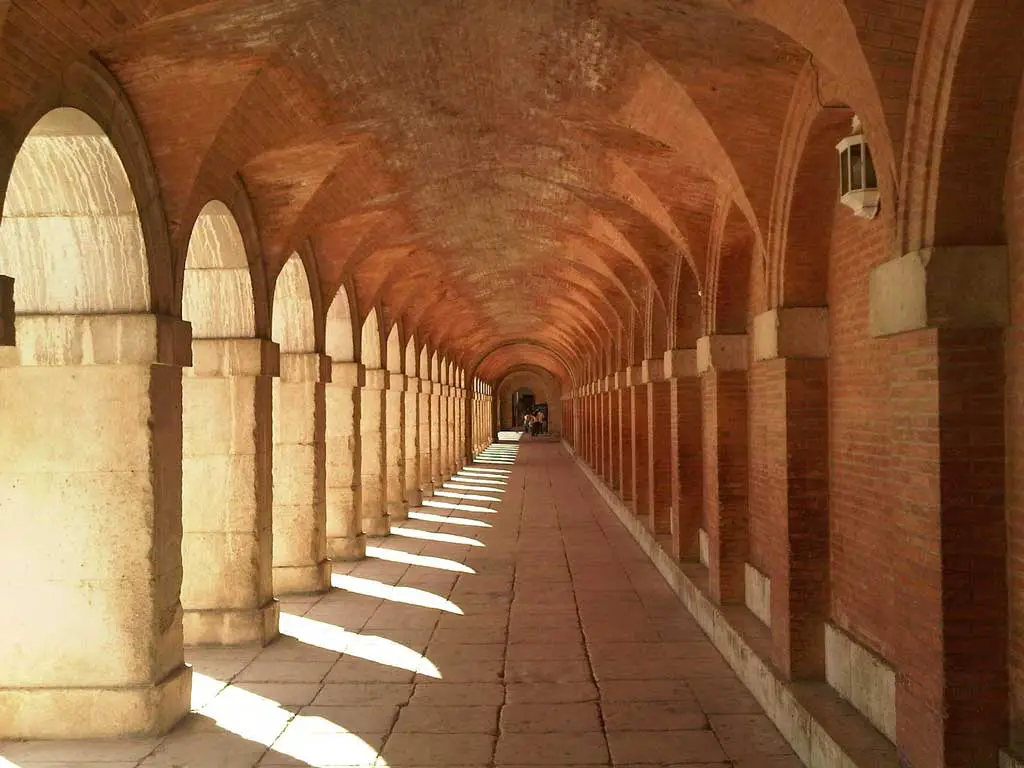
Another aspect of creating rhythm in architectural design is the use of light and shadow. Although they are not physical elements of buildings, light and shadow can improve the visual balance of a design.
Architects commonly use natural and artificial light sources together in their designs. For example, the numbers, sizes and places of windows can create rhythmic patterns of natural light and shadows inside.
Moreover, light and shadow can be the main elements of a building design. Using openings, colonnades or arches, architects can manage the amount of light and shadow as well as their places. They can also create a repeating pattern of artificial light fixtures to form a rhythm.
7 Notable Examples of Rhythm in Architecture
Parthenon of Athens
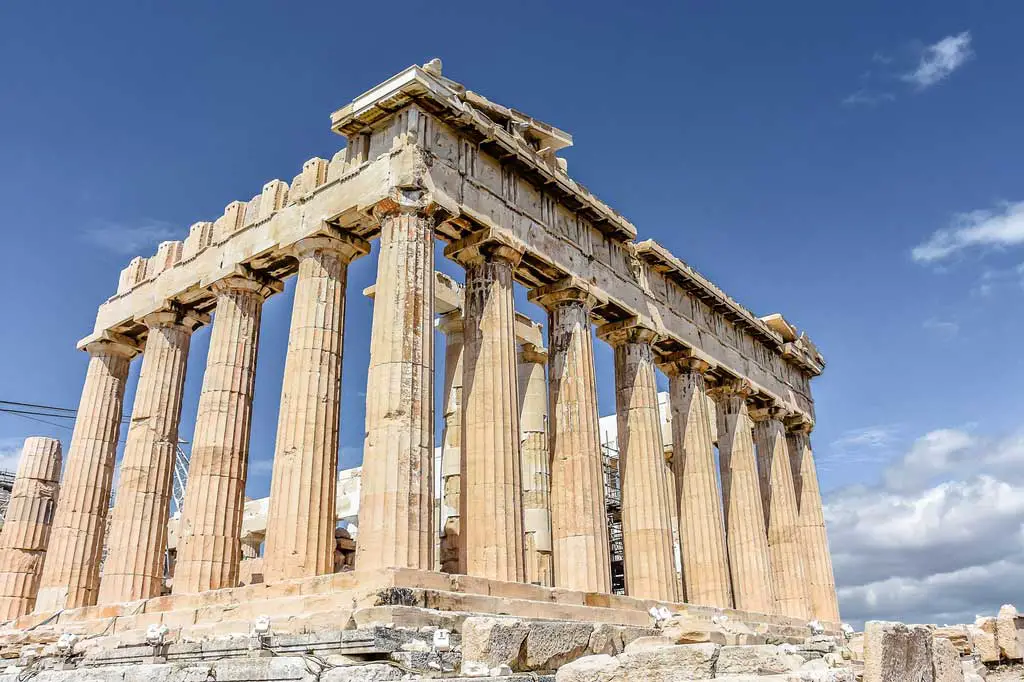
As aforementioned, classical architecture had always tried to achieve visual harmony by using repeating elements. Using traditional elements like columns, metopes and friezes, ancient structures perfectly match the rhythmic design.
The Parthenon of Athens in Greece is a classical example of ancient Greek architecture. This rectangular temple features the exact same columns, which were sorted to create a regular rhythm.
Colosseum
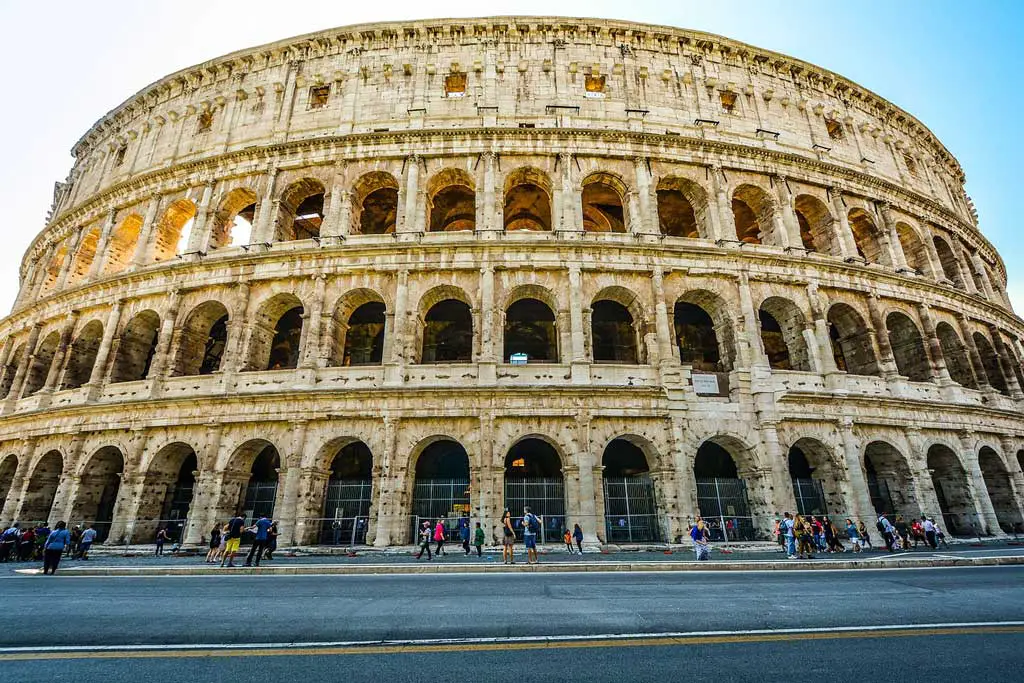
Another important classical building that includes a rhythm in its design is Colosseum in Rome. The huge facade of this circular amphitheater has patterns of repeated arches and pillars.
While arches are of the same type, the pilasters have different styles. The first-floor pilasters are in Doric, the second-floor pilasters are Ionic and the upper pilasters are Corinthian style. This means each floor features a different order. The overall facade has a regular rhythm and balance, though.
Bilbao Guggenheim Museum

There are not only examples of regular rhythm in architecture but also irregular and visual rhythm. They are seen mostly in contemporary buildings as asymmetrical balance generally requires advanced building technologies.
Bilbao Guggenheim Museum, designed by Frank Gehry in Bilbao, Spain, is a great example of asymmetrical and visual balance. The architect designed the mass of the museum building with repeated curves and spirals in various sizes and shapes.
While there is no regular pattern in Guggenheim Museum, the overall design creates a sense of harmony through the flowing rhythm of architectural proportions.
Burj Khalifa
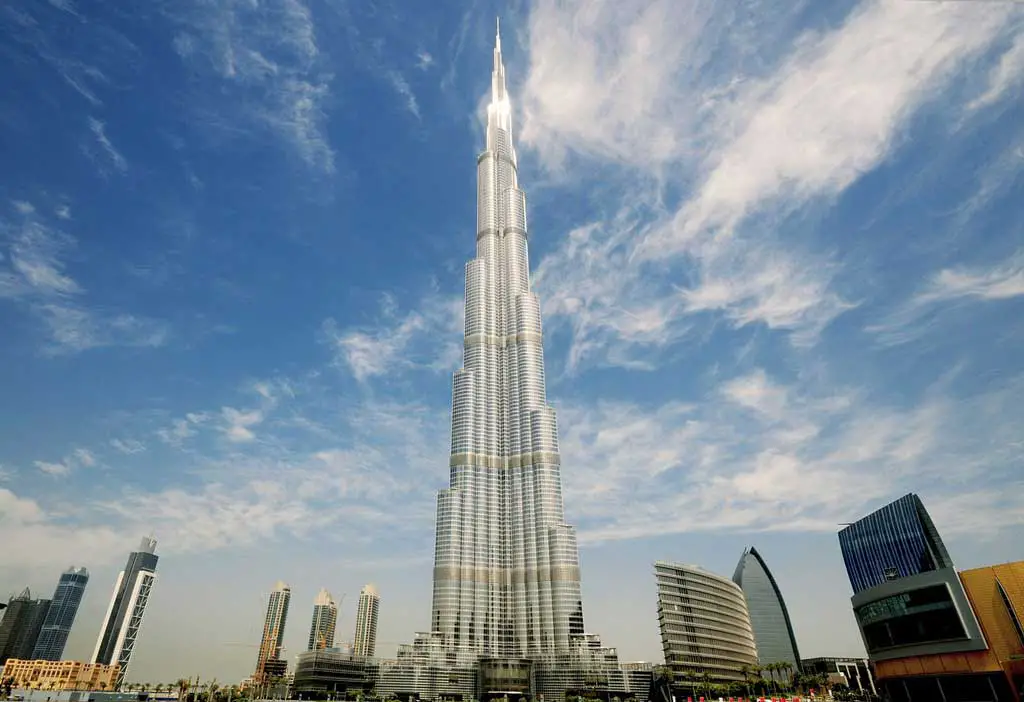
Can you see Burj Khalifa’s tapering mass upward? Using the same building elements, the building is just lowering the number of blocks and their visual weight.
By doing this, Burj Khalifa, the world’s tallest building, serves as a model of progressive rhythm in architecture. It is also an example of vertical balance.
Sydney Opera House
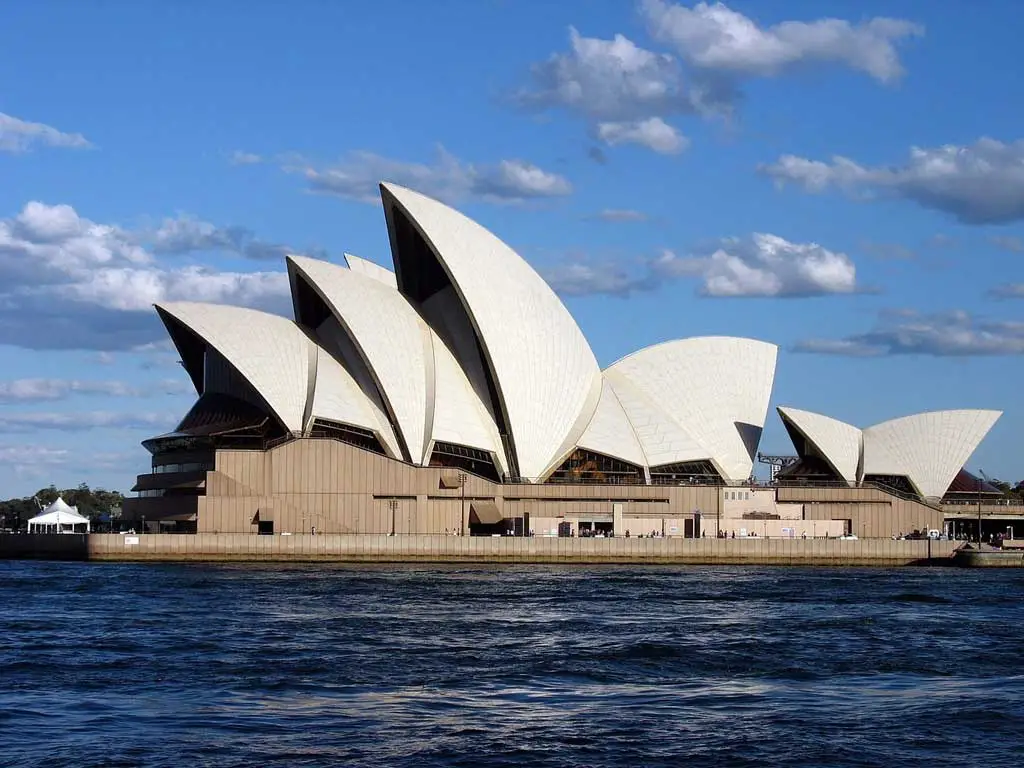
Just like Burj Khalifa, the Sydney Opera House in Australia is an example of progressive rhythm. Its main mass consists of the repeated use of curves and shells.
This asymmetrical balance has been made by the irregular arrangement of shells. Creating an excellent chaotic harmony, this rhythm adds dynamism and movement to the characteristic of the building.
Louvre Museum
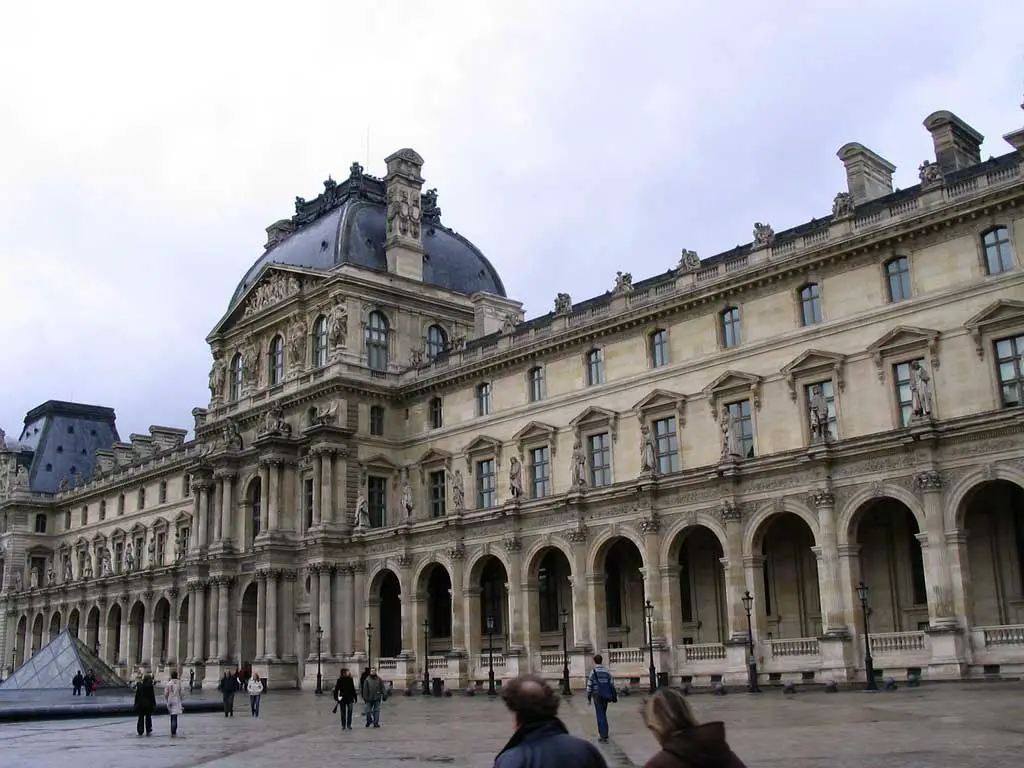
Lastly, we want to mention the facade of the Louvre Museum in Paris. It has repeated patterns on each floor. Arches, pilasters, windows and sculptures are the main elements that create these rhythms.
Conclusion
In conclusion, rhythm is an essential tool that helps architects to create harmonious and balanced designs. There are 5 types of rhythm: regular, progressive, alternating, random and flowing rhythm.
Architects can use different kinds of building elements to create rhythm in architecture. By changing the proportions and scale of the building elements via repetition, light and shadow, they can achieve rhythmic designs.
Overall, architects should consider creating rhythmical patterns in architecture to design eye-pleasing, harmonious and balance structures. This has been both a simple and systematic way of designing for thousands of years.
Frequently Asked Questions
A: Rhythm in architecture refers to the repetition of patterns, shapes, and elements in building design. It helps to create an aesthetically pleasing and harmonious design that is both pleasing to the eye and functional.
A: Rhythm is important in building design as it helps to produce a sense of balance and unity within the structure. It contributes to the overall design of buildings and helps architects with a design strategy.
A: There are 5 types of rhythm in architectural design and these are: regular, progressive, alternating, random and flowing rhythm.












